Kevin Clarke
Operetta Research Center
7 December, 2023
As everyone who’s currently watching season 2 of The Gilded Age knows: marriage in New York City among the super-rich in the 1890s was not an easy matter. Matrimonial matches were carefully negotiated, the amount of wealth played a big role and of course the social standing of the respective fiancées. In Gustave Kerker’s 1897 The Belle of New York the rich bachelor Harry Bronson is planning to marry a whole string of “unsuitable” girls – until his morally outraged father Ichabod Bronson disinherits Harry to put a stop to such activities. Instead, he bestows his millions on a Salvation Army girl called Violet, who starts a Purity Brigade with it.
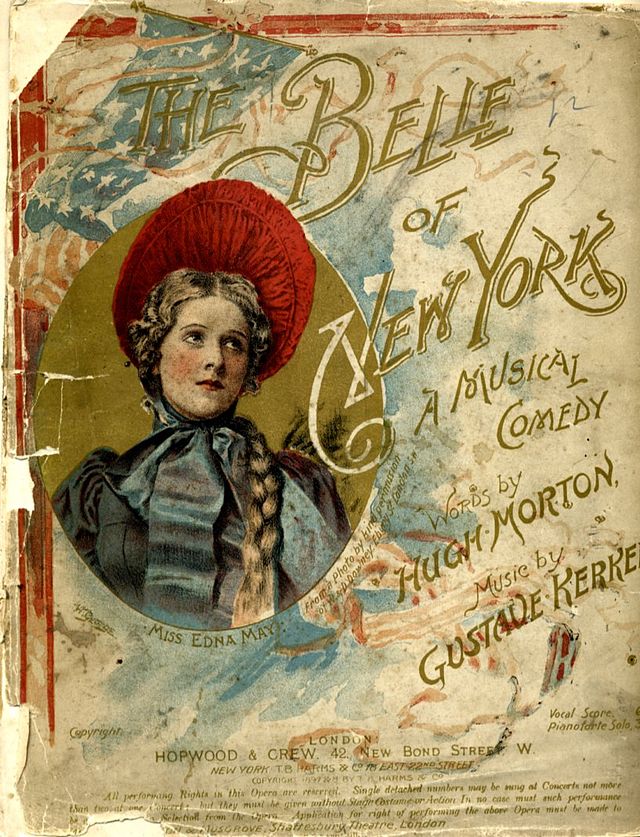
Kerker’s most successful show, “The Belle of New York”.
The tale of the hard-drinking and carelessly promising marriage bon vivant Harry Bronson – pursued by an opera singer called Cora Angelique, a music hall dancer named Kissie Fitzgarter, and a French confectioner’s daughter called Fifi – was first presented at the Casino Theatre on Broadway in 1897, with a book and lyrics by Hugh Morton and music by Gustave Kerker, a composer born in Herford/Germany who emigrated to the United States.
The show only ran on Broadway for 64 performances originally. Edna May stared as the Salvation Army girl Violet, she made quite a splash. Certainly when the show moved to London’s Shaftsbury Theatre in 1898 and ran for nearly 700 performances. Long runs in Paris and Berlin followed.

A flyer for “The Belle of New York” from New York, 1898. (Photo: Collection Dario Salvi)
Two film versions were made, one in 1919 with Marion Davies, another in 1952 with Vera-Ellen and Fred Astaire, though the latter had absolutely nothing to do with the original show, except for the title. (The new score was by Johnny Mercer and Harry Warren.)
For a while now, the artistic head of the German record compay cpo has championed the music of Gustave Kerker who was born not too far away from where cpo has its headquarters. In his endevour to promote Kerker, Burkhard Schmilgun persuaded the Theater für Niedersachsen (TfN) to perform The Belle of New York in a concert version – so he could record the piece and release it on a double disc. TfN has its own “musicals” department and managed to combine opera and musical people for Belle, a blessing, certainly when compare to any other cpo operetta release.
Using a new performance edition commissioned from Dario Salvi, conductor Florian Ziemen managed two performances in May 2022 in the opera house of Hildesheim. After a long editing process, the cast album has now been released. It’s the first full recording of this once famous piece. This offers a rare chance to hear a central show – somewhere between operetta, comic opera, and musical comedy – of an era not well represented on CD.

Florian Ziemen conducting the TfN orchestra. (Photo: Tim Müller)
“Young Men’s Rescue League”
The half-half-cast in Hildesheim is huge, not all of them are native speakers. But the original libretto already states that Ichabod Bronson – “President of the Young Men’s Rescue League and Anti Cigarette Society of Cohoes” – has German roots. There’s also a German terrorist named Karl von Pumpernick who constantly threatens to blow things (and people) up, a running “gag” that does not sit too comfortably today. There is the French girl Fifi. And of course, on the whole, New York City was a melting pot back then, so a variety of accents seems more than natural.
The TfN also offers a fairly large orchestra and chorus that sounds even larger on disc than it was in the theater (24 orchestra players in total). It’s doubtful that the Casino Theatre or the Shaftsbury had anything that grand on offer. Florian Ziemen dives into the score with vigor, showing a lot of tempo flexibility. Which is great. When Kerker goes into full Salvation Army marching mode – with cymbals and drums – the music is almost drowned out here by so much “noise”. Elsewhere, the rhythmic bounce seems a little off at times, because the percussion is so loud on the off-beats that it’s almost disturbing to hear. But Mr. Ziemen wanted a “harsher” sound, as he told me in a phone conversation.
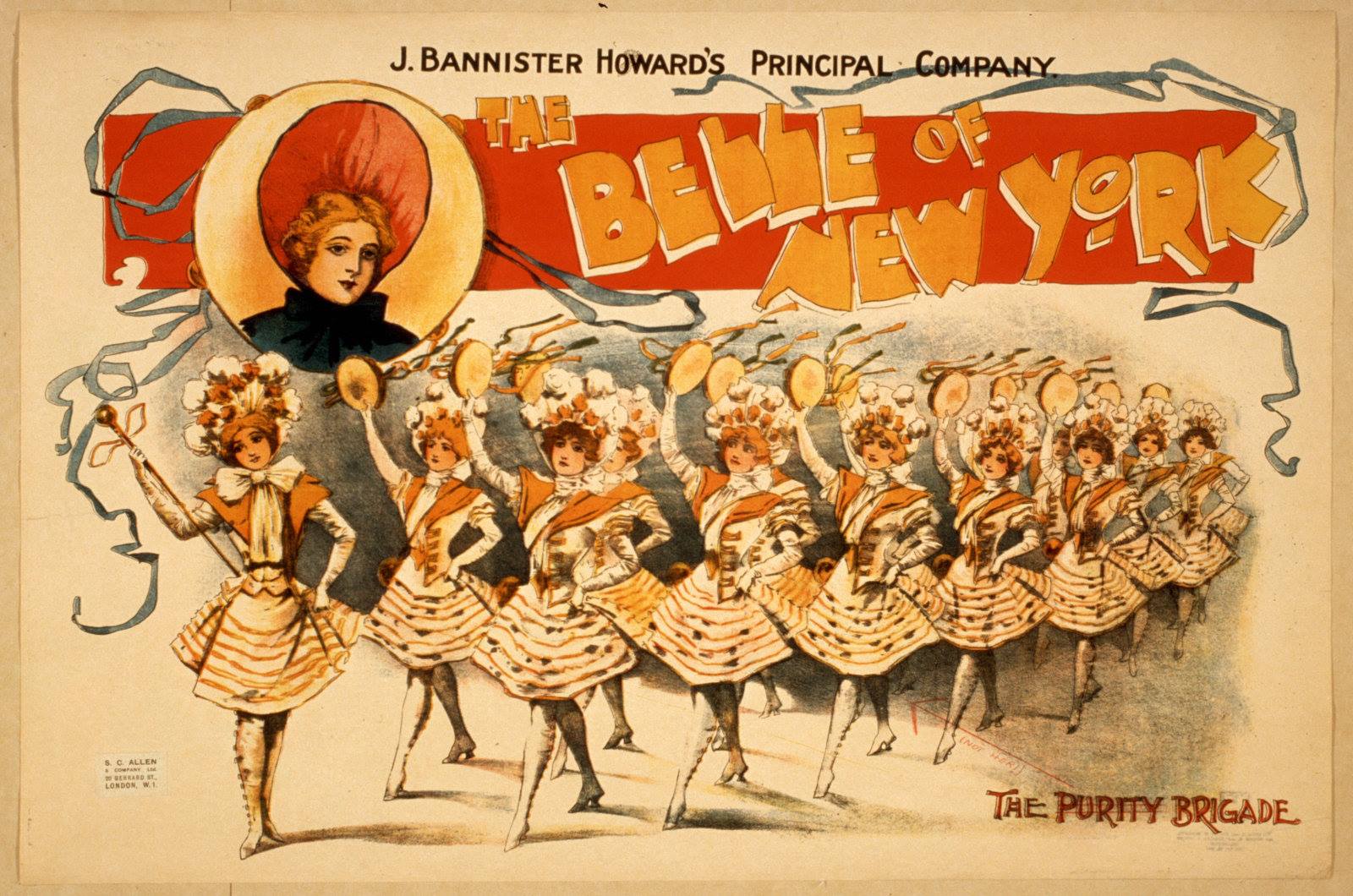
Poster for the “Belle of New York” featuring the so called “Purity Brigade.” (Photo: Collection Dario Salvi)
On the whole this is an attractive reading of the score with lots of bounce and rubato. Compared to the 1994 album Golden Days, on which Jerry Hadley presents music by Victor Herbert, Sigmund Romberg and Rudolf Friml from vaguely the same era, you’ll notice that conductor Paul Gemignani aims for a much (much!) more suave sound in numbers such as “The Streets of New York”. Ziemen, in contrast, goes for more drama, less gloss. A valid artistic decision.
As Harry Bronson we hear Julian Rohde who has an interesting and highly characteristic tenor voice that makes him easily distinguishable – and likeable – on this disc. He also brings a certain wink to the dialogue, almost reminiscent of Blake Ritson in The Gilded Age.
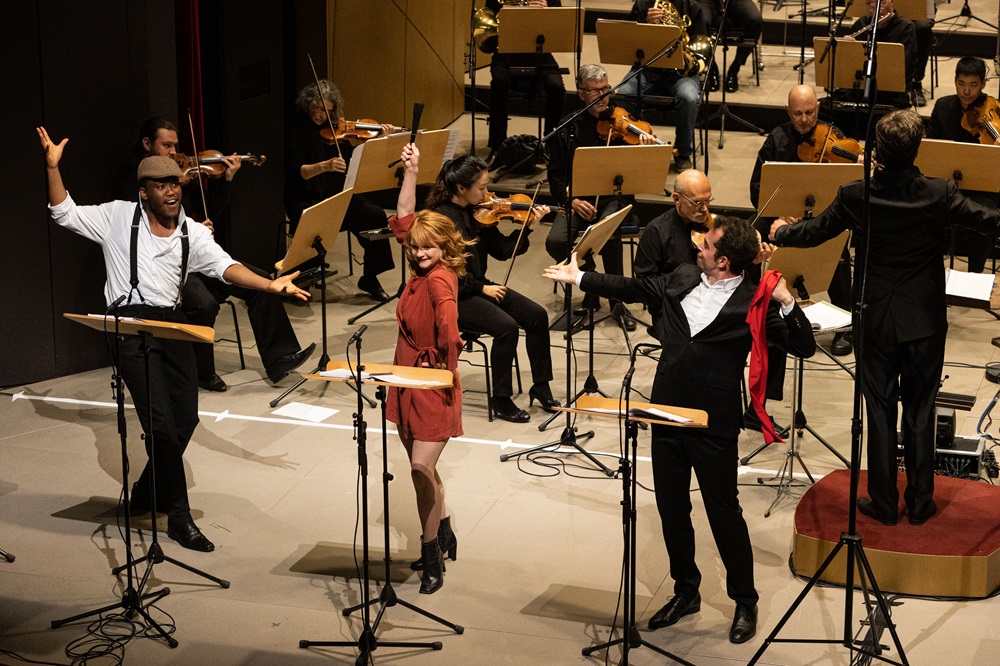
Eddie Mofokeng (l.) as Blinky Bill, Lara Hofmann as Kissie and Felix Mischittz as Kenneth Mugg in “The Belle of New York”. (Photo: Tim Müller)
Delightfully French!
Bronson Senior is played by Uwe Tobias Hieronimi with a mighty baritone speaking voice that sadly doesn’t sound funny enough to make this outrageous moral crusader interesting, as a male equivalent to Christine Baranski in Gilded Age. Hieronimi, like various others here, also doesn’t articulate the lyrics very clearly. Which makes it tricky, at times, to understand what’s going on.

Christine Baranski as Oscar’s mother (r.) and Cynthia Nixon as his aunt in “The Gilded Age”. (Photo: HBO)
The plot summary in the booklet is helpful. And snippets of linking dialogue are a great help, too. Getting the audience reaction is a big plus as well, as it makes this performance come alive in a way studio albums rarely do.
In the title role, Robyn Allegra Parton is a vocal charmer. Violet is a strange character, as we can never be fully sure how serious she is about her moral activism. In act two she falls in love with the newly impoverished Harry who has started “honest” work as an ice cream vendor and claimes to be “reformed”. They get together in the end as a love match, with the blessing of Ichabod Bronson.

The entire “Belle of New York” cast in Hildesheim. (Photo: Tim Müller)
The rest of the slightly shady characters is also well cast. Kathrin Finja Meier is a delightfully French Fifi, demonstrating a lot of Broadway flair.
Some of the more “problematic” lyrics in the China Town scene have been erased in favor of an instrumental version of the respective music. And the trio “Come with Us to Portugal” from the London version of the show has been included, instead of the original number for Fifi and her two suitors from the New York version.
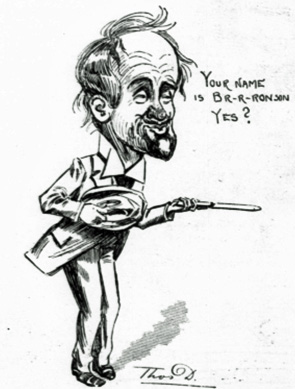
J. E. Sullivan as Karl von Pumpernick in “The Belle of New York”, as shown in “Judy”, 1899. (Photo: Judy, or the London Serio-Comic Journal)
A Secret Kerker Foundation at Work in Central Europe?
On Facebook Kurt Gänzl publicly complained: “Of all the American musicals of the turn of the century years, why this one? But I remember someone in Germany had a crack at the Oberen Zehntausend so perhaps there’s a secret Kerker Foundation at work in Central Europe …” Elsewhere, Mr. Gänzl suggested that Erminie might be recorded next, the comic opera by Edward Jakobowski (music) and Claxson Bellamy/Harry Paulton, a long-running hit on Broadway in 1886. Of course, you could also wish for Florodora – or The Black Crook. Which would be really wonderful to finally hear, in full. (Surely, Mr. Salvi could create a performance edition for that.)
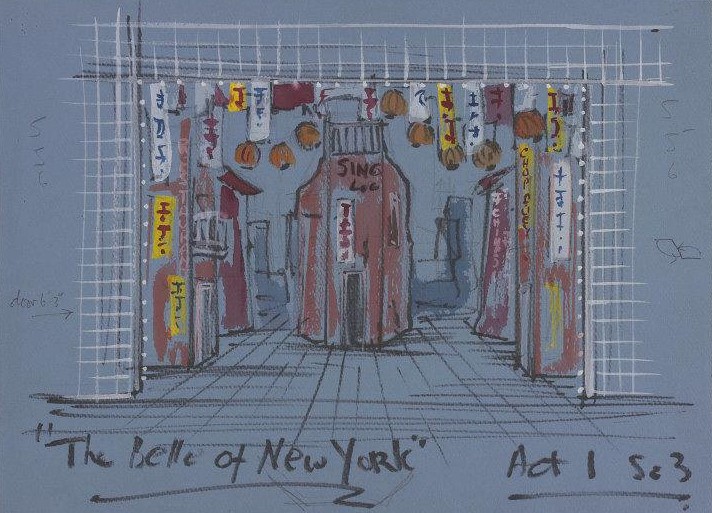
The China Town scene from “The Belle of New York.” (Photo: Collection Dario Salvi)
Conductor and musicologist Joseph Rubin also complained, again on Facebook, that “of all the early musicals to record, this shouldn’t have been the first choice”. He also points out that the lyrics are “very difficult to understand” because “English is not the first language of the singers” (which is only partly true).
Others lamented that the overture is omitted. And a few songs have been cut. It’s still a lot of music, the first disc containing 75 minutes of audio material, the second 51 minutes.
So, while we might have to wait a little longer for all the other legendary Broadway shows that have not be honored with a modern day recording, we can enjoy this Belle of New York, dispite it’s somewhat underinspired cover. (Who does these designs at cpo, I wonder?)
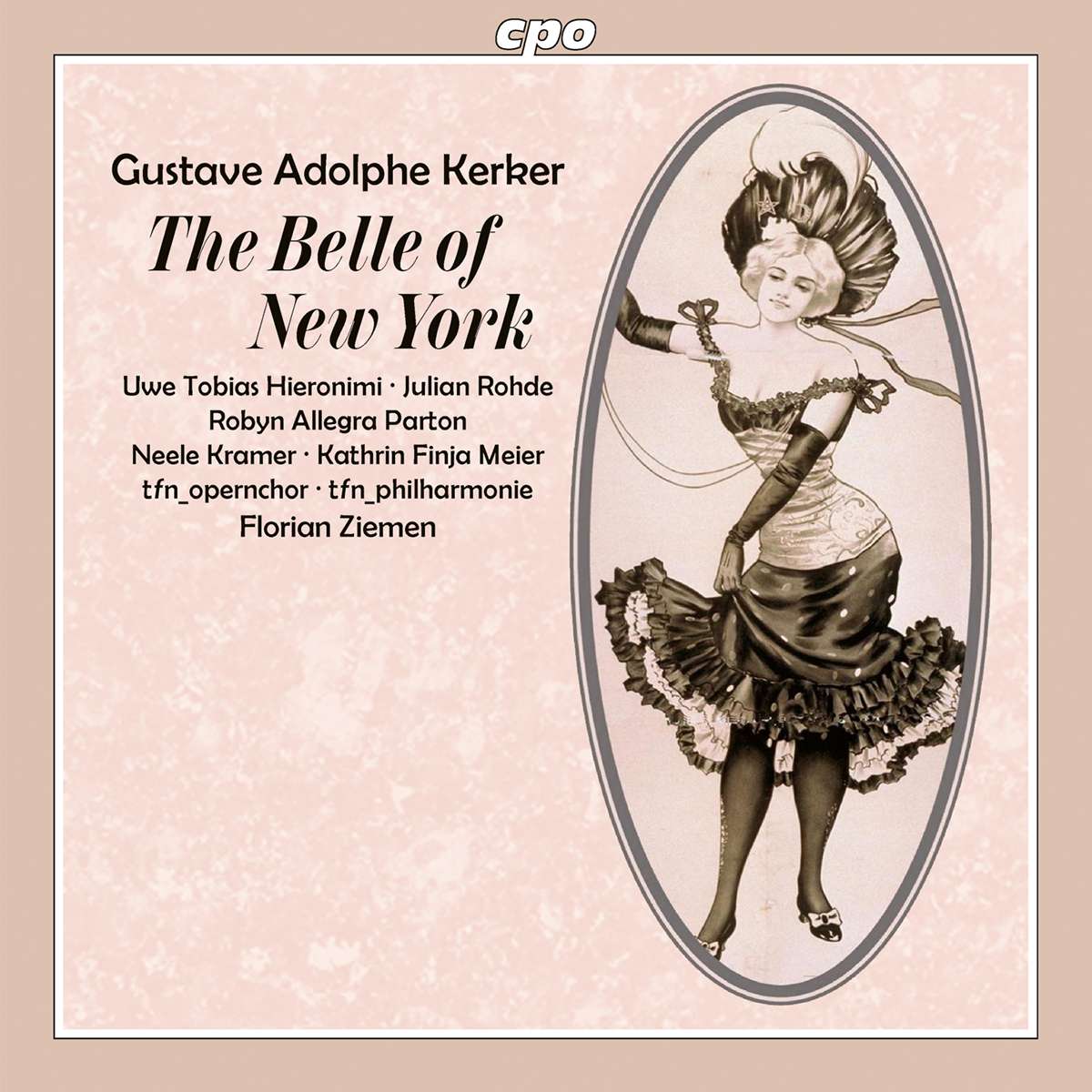
CD cover for “The Belle of New York” conducted by Florian Ziemen. (Photo: cpo)
By the way, Florian Ziemen already conducted Kerker’s Die oberen Zehntausend – a “dance operetta” created for Berlin’s Metropol Theater, to show Germany’s elite the glories of American style entertainment – while he was in Gießen as general music dirctor (GMD), the somewhat lackluster cpo recording is conducted by Howard Griffiths (lacklustre because of the cast, not the orchestra, which is the NDR Radiophilharmonie). That CD also includes the one-act farce Burning to Sing, or Singing to Burn. A ‘Very’ Grand Opera, again missing the fun that one should and could have with such a piece.
The last word in all matters concerning Kerker isn’t spoken, but at least a rediscovery of shows from that “gilded” era is underway. Which is good news!
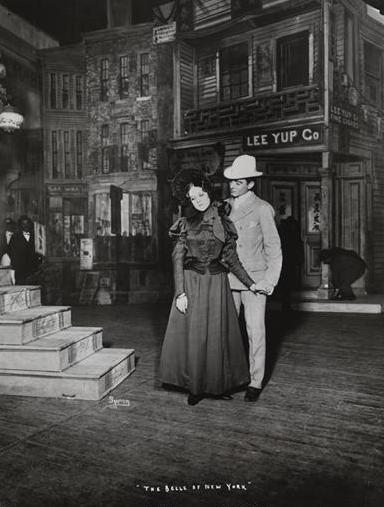
A scene from “Belle of New York.” (Photo: Collection Dario Salvi)
Let’s wait and see if New York’s Encore! series will give The Belle of New York the all-star treatment and a more “American” recording. Would be interesting.
For a detailed account by Dario Salvi of The Belle of New York and its revival possibilities, click here.

Is the dialogue on this new recording in English or German?
The dialogue is in English, but I’m sure if the dialogue has been rewritten from the original.
Addendum: but I’m [not] sure, etc.